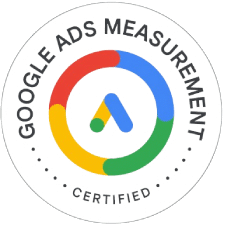Do you realize that your website could be issued an ADA (Americans with Disabilities Act) litigation for non-compliance?
You read that right. Your brick-and-mortar space and website should comply with the ADA’s disability guidelines. Only a few people know about it once they have a lawsuit. If you are not involved in an ADA-compliant website lawsuit, you can avoid it altogether.
Here’s an outline of what this article covers:
- What is ADA Compliance?
- Is ADA Compliance mandatory for websites?
- What are the effects of compliance (and non-compliance) on your business?
A Closer Look at the ADA:
President George H.W. Bush passed the ADA into law on January 1st, 2009. The original intention of the act when it was passed into law about three decades ago was to guard against the discrimination of people with disabilities.
The ADA Act applies to your business if:
- Your business benefits the public
- You are a private employer with 15 or more employees, or
- You are a local, state, or government agency
At the heart of ADA is providing a similar experience to all people – including (and especially) people with disabilities.
Title III of the Act mandated the removal of physical barriers that hindered the inclusion of people with disabilities in all places of public accommodation.
A place of public accommodation is a business open to the public that falls into one of the 12 categories listed in the ADA. These categories include restaurants, shopping centers, schools, hospitals, and recreation facilities.
The million-dollar question for a long time is whether or not a website passes a “place of public accommodation.” When this law passed in the 90s, the internet was still in its infancy. The internet was not part of our daily life as it has become now. As such, the language used in the law was unclear on whether the ADA included website accessibility.
The Litigation Problems
There are no clear standards guiding website accessibility. However, that hasn’t stopped many businesses from being dragged into lawsuits. More than a few of these businesses have been required to pay thousands of dollars in settlement to plaintiffs violating Title III of the ADA.
The cases of ADA lawsuits continue to rise. According to Seyfarth ADA Title III News & Insights Blog, there was a 180% increase in ADA litigation cases from 2017 to 2018. And those numbers are not likely to slow down soon.
Some have taken advantage of this loophole to enrich themselves. It is believed that for some plaintiffs involved in these litigations, the deal is about something other than expanding access. It is about having a few more bucks in the bank — the thousands of cases of accessibility-related litigations in the US.
You have to act to guard your business against the setback of a significant lawsuit.
This will cost you time and money and mental and emotional stress. It could even damage your brand reputation. If handled carefully, it could save you your business.
The lawsuits are based on two premises:
- A company website passes as a place of public accommodation.
- The website is discriminatory (as far as accessibility goes) in that it does not provide access to people with disabilities.
For example, does your website have speech-reading software incorporated in its code for the visually impaired? If you answer no, you could soon have an ADA litigation situation.
For some, February 2018 was a time to breathe a sigh of relief, as that was when Congress passed the ADA Education and Reform Act. The reform was outlined by Representative Ted Poe, who wrote the bill. This change makes it a little more difficult for a lawsuit to be slapped against a business.
It also provides affected entities a 120-day window after they have been addressed with a written notice—sixty days to acknowledge the complaint and describe their plans to fix the alleged issues. Then, they have 60 more days to fix the problem or prove they are making substantial progress.
What is an ADA-Compliant Website?
The US Department of Justice (DOJ) made it quite clear that websites need to be accessible to people with disabilities. The challenge, however, is that there are still no legal standards guiding what is and what isn’t an ADA-compliant website.
One famous case of the ADA lawsuit was the University of California Berkeley 2016. The DOJ ruled against UC Berkeley, stating it violated the ADA Act. Their video content did not include captions for deaf visitors. Since deaf visitors did not have access to the video content, it was considered discriminatory against persons with disabilities.
In this case and a few others, the DOJ referred to the Web Content Accessibility Guidelines (WCAG) as a decent benchmark for guiding accessibility. Currently, WCAG seems to be the most reliable guideline for evaluating website accessibility. WCAG will likely continue to serve as the gold standard for ADA compliance until the United States Congress gives more clarity on the matter.
Understanding the WCAG: Is your website ADA Compliant?
The Web Content Accessibility Guidelines (WCAG) is an initiative of the World Wide Web Consortium (W3C). They are the closest guidelines to legal standards for measuring website accessibility.
It’s essential to keep in mind, though, that WCAG is not law. Just because your website conforms to the WCAG doesn’t automatically mean you are ADA-compliant.
Nonetheless, the WCAG guidelines provide a helpful framework for working towards website accessibility. Even courts have come to rely on it. The WCAG 2.0 outlines four principles for website accessible design. Stating that websites must be:
- Perceivable
- Operable
- Understandable
- Robust
People with disabilities should be factored into your website’s design and content creation. These disabilities include, but are not limited to, low vision and blindness, hearing loss and deafness, cognitive limitations, limitations to movement, and photosensitivity.
Where do we go from here?
The lack of explicit clarity around the legal definition of an ADA-compliant website still exists. Regardless, your business or agency should strive to make your website accessible to as many types of people with disabilities as possible. Not only does this protect you from a lawsuit, but it is also good business practice.
How so? For one thing, you open up your business to a more extensive potential customer base: over 40 million more Americans. According to the CDC, One in 4 U.S. adults – 61 million Americans – have a disability that impacts major life activities.
Furthermore, the practices involved in making websites accessible should be part of your website SEO practice. Consider general accessibility in your website design because it is the right thing to do.
For website owners, the biggest challenge in working towards compliance is the cost of making a website ADA-compliant. If your website is not ADA compliant, the potential cost you would have to pay from the lawsuit is not worth it. It could cost from a few hundred to tens of thousands of dollars, depending on the complexity of the website.
There are many benefits to having an ADA-compliant website, such as increased brand reputation, brand loyalty, and client referrals. Consider the alternative, though. If you don’t make your website compliant and file a lawsuit, you will spend more money than you hoped to save.
If you haven’t already, you should have your website checked for accessibility and make plans to ensure it becomes “accessible.”
Time for a Recap
An ADA-compliant website passes a set of web accessibility standards. It considers the inclusion of people with disabilities in its content creation. Just remember: the benefits of being compliant are worth the effort.
Is ADA compliance mandatory for business?
Yes, it is! Your website could be at the risk of litigation if it is not ADA-compliant.
If you need to check your website for ADA compliance, plan appropriately to make it compliant by contacting us. Our dedicated team at Search Engine Projects would be happy to walk you through the process.













